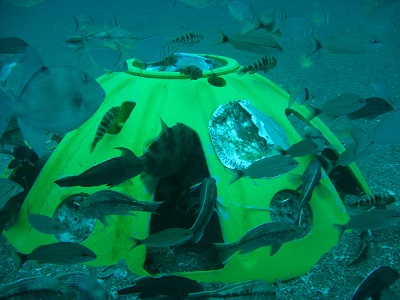MPRSA Ocean Site Designation
The Marine Protection, Research, and Sanctuaries Act (MPRSA) authorizes the EPA to designate areas for activities permitted under the MPRSA and requires that ocean sites are selected in locations that mitigate adverse impacts to the greatest extent practicable.
Under MPRSA section 102, the EPA is responsible for designating ocean sites for activities permitted by the MPRSA, including the disposition of dredged material into the ocean. The EPA designates ocean sites through rulemaking and sites are published at 40 CFR 228.15. The EPA bases the designation of an MPRSA ocean site on environmental studies of a proposed site, environmental studies of regions adjacent to the site, and historical knowledge of the impact of dumping on areas similar to the sites in physical, chemical and biological characteristics. All studies for the evaluation and potential selection of MPRSA ocean sites are conducted in accordance with the criteria published in 40 CFR 228.5 and 228.6.
The EPA is also responsible for the management of designated MPRSA ocean sites. For further information about MPRSA ocean sites, visit our MPRSA Ocean Sites web page or see the Code of Federal Regulations for the Marine Protection, Research and Sanctuaries Act Part 228.
Under MPRSA section 103(b), U.S. Army Corps of Engineers (USACE), in consultation with the EPA, can select an “alternative” site for dredged material for short-term use in the cases where it is not feasible to use a designated ocean site. The EPA must concur on use of “alternative” ocean sites selected by USACE for dredged material.
MPRSA Marine Protection Criteria
The EPA must consider the marine protection criteria published in the 40 CFR 228.5 and 228.6, when selecting an ocean site for designation (as does the USACE when selecting an alternative site). In general, sites are selected in areas where the permitted activities will not have a significant impact on various amenities such as fisheries, coral reefs, protected species and other legitimate uses of the ocean.

Some specific factors considered in a site designation evaluation include:
- geographic position of the site;
- depth of water at the site;
- bottom topography at the site;
- oceanic conditions at the site;
- existing water quality and ecology of the site;
- natural resources that use the site or nearby areas;
- proximity to beaches, historical/cultural sites and marine sanctuaries;
- interference with shipping, fishing, recreation and other legitimate uses of the ocean;
- types and quantities of material that will be released at site; and
- feasibility to manage and monitor the site.
The evaluation process includes conducting oceanographic studies to establish the environmental conditions at all alternative locations being considered as potential sites, as well as the area or region encompassing the alternative sites. Results from oceanographic studies and other sources are used to model likely dispersion and deposition of material at alternative sites and evaluate the potential for adverse impacts. This information is used to select the best ocean site proposed for designation.
By critically analyzing the site selection criteria, the EPA assures that the ocean site selected for designation will not likely cause significant adverse impacts to the surrounding marine environment. The EPA analyzes these impacts through environmental assessments or environmental impact statements for site designations.
Site De-designations
The EPA has, in the past, de-designated specific ocean sites to discontinue use of the site on the basis that it is no longer needed and/or because continuing to use the site is no longer projected to meet ocean dumping requirements. A list of de-designated ocean sites is provided below.
- De-designation of the Gulf Ocean Incineration Site (pdf) and the Acid Waste Site (pdf) (March 29, 1991).
- De-designation of Cellar Dirt Site in the New York Bite (pdf) and the Newburyport, MA (pdf) dredged material sites (December 29, 1994).
- De-designation and Termination of the New York Bight Dredged Material Disposal Site (pdf) (also known as the Mud Dump Site) (September 29, 1997).
- De-designation of four existing ocean dredged material disposal sites located off of the mouth of the Columbia River (pdf) near the states of Oregon and Washington (April 1, 2005).
- De-designation of Ocean Dredged Material Disposal Site and Designation of New Site Near Coos Bay, OR (pdf) (June 12, 2006).
- De-designation of the Grays Harbor Eight Mile Site (September 24, 2018).
- De-designation of the 1987 Wilmington Site (July 13, 2020).
